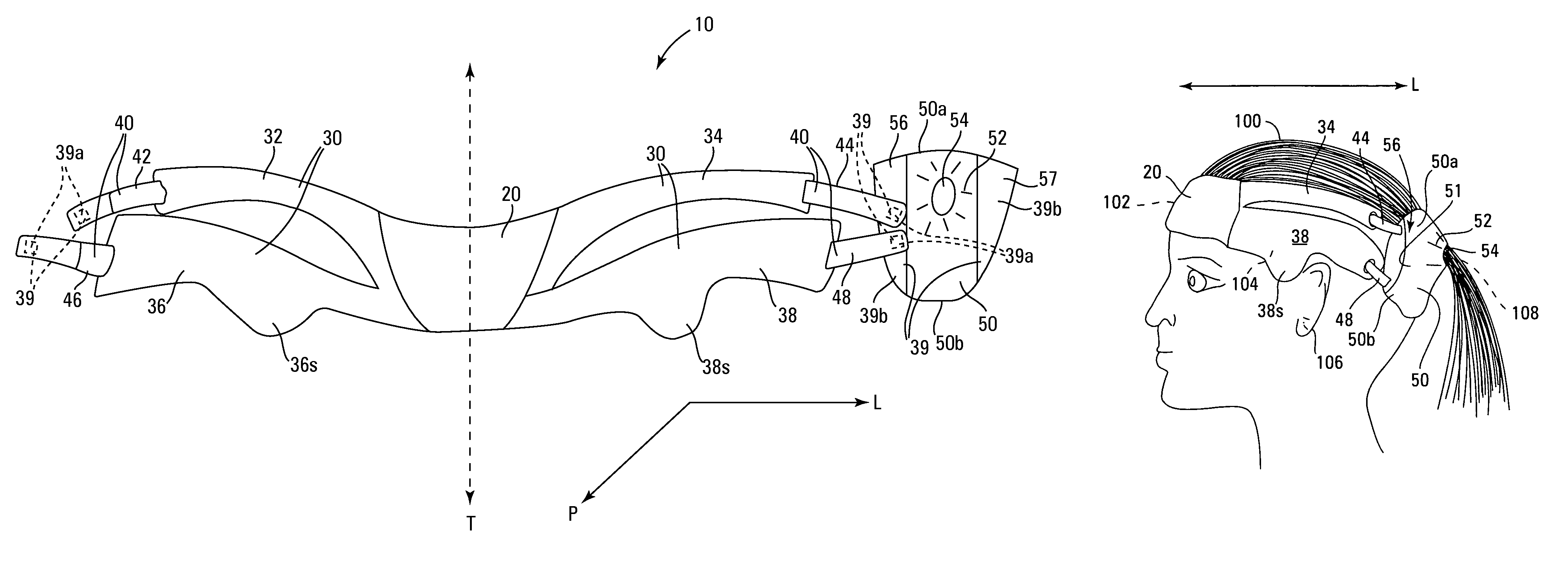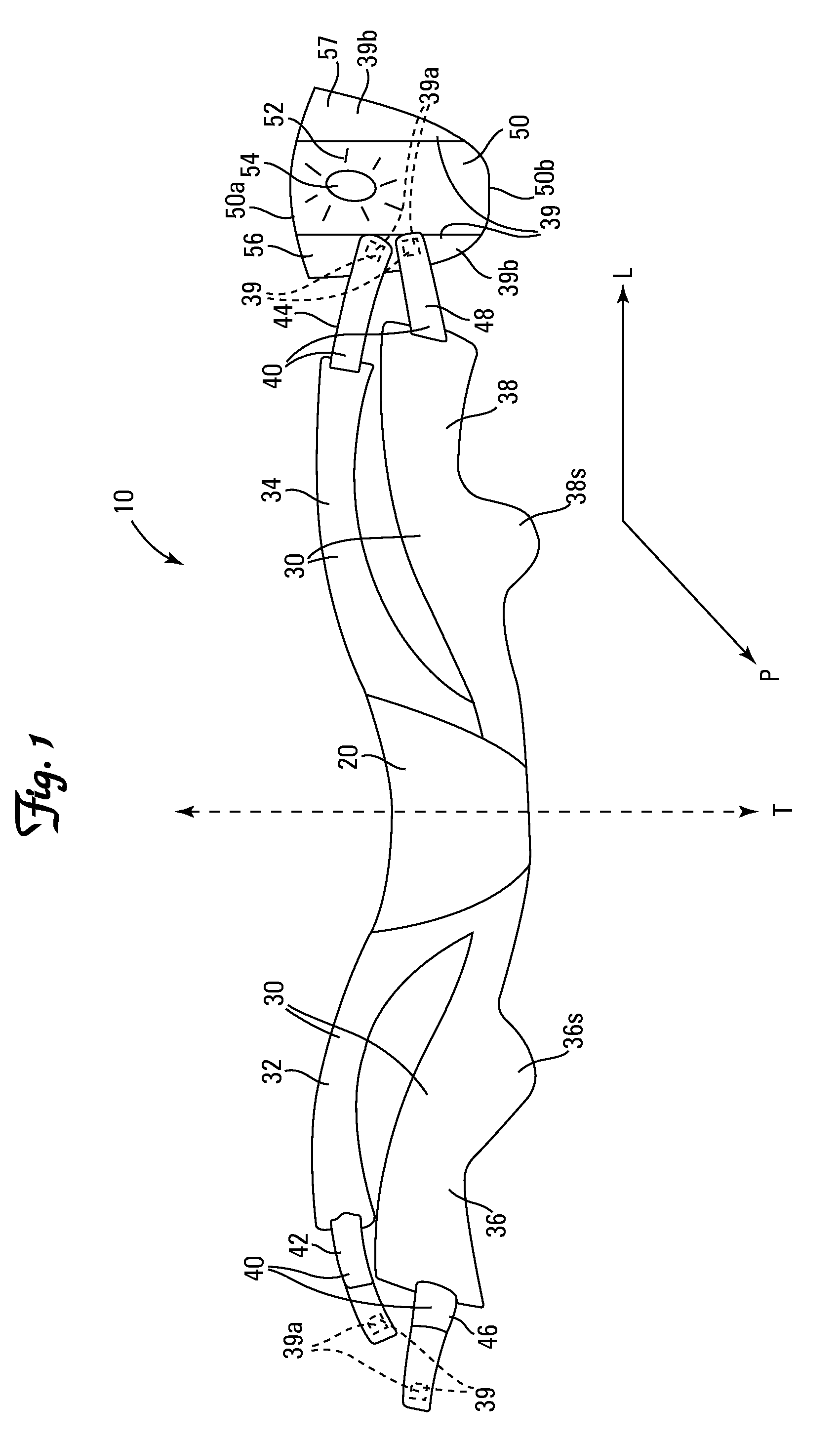Headguard with an eccentric dimple for accommodating the occipital bone
a headguard and eccentric technology, applied in the direction of headwear caps, protective garments, hats, etc., can solve the problems of chinstraps posing problems, chinstraps may heighten risks, and increase the rigidity of head protection
- Summary
- Abstract
- Description
- Claims
- Application Information
AI Technical Summary
Problems solved by technology
Method used
Image
Examples
first embodiment
[0020]The present claimed invention is intended to improve fit and retention of a headguard 10 around a human head 100. The headguard 10 can be used for many purposes. For example, uses could include soccer or other activities where a lightweight, well-ventilated, snug fitting, and securely affixed protective headguard 10 is desirable. As a user perspires a headguard will have a greater tendency to move out of its intended position.
[0021]The shape of the human head 100, above the eye brows, is basically a cone. The occipital bone 108 of the human head 100 is a curved, protruding bone located on the back part of the skull at the base of the cranium. The occipital bone 108 joins the parietal and temporal bones and protects the occipital lobe of the brain. When any flat object, such as a headband or headguard 10, is wrapped around the head 100 it has a tendency to “slip or slide” upward leaving portions of the occipital bone 108 unprotected. In order to protect the occipital bone 108 a...
PUM
 Login to View More
Login to View More Abstract
Description
Claims
Application Information
 Login to View More
Login to View More - R&D
- Intellectual Property
- Life Sciences
- Materials
- Tech Scout
- Unparalleled Data Quality
- Higher Quality Content
- 60% Fewer Hallucinations
Browse by: Latest US Patents, China's latest patents, Technical Efficacy Thesaurus, Application Domain, Technology Topic, Popular Technical Reports.
© 2025 PatSnap. All rights reserved.Legal|Privacy policy|Modern Slavery Act Transparency Statement|Sitemap|About US| Contact US: help@patsnap.com



